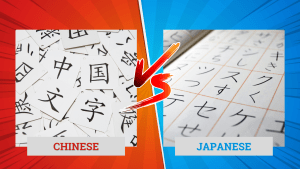Singlish, Singapore’s unofficial language, represents a sense of belonging and community among Singaporeans, serving as a reflection of the nation’s rich multicultural heritage.
As part of our ongoing series looking at the official languages of Singapore, this article explores the origins and features of Singlish, examines its role in Singaporean culture, and discusses the ongoing debates about its place in a world influenced by globalization.
What is Singlish?
Singlish is an English-based creole language that originated in Singapore, emerging from the melting pot of linguistic diversity found in the country. It has been shaped extensively through prolonged language contact between speakers of various Asian languages, including Malay, Cantonese, Hokkien, Mandarin, Teochew, and Tamil.
As a colloquial form of English, Singlish acts as a common language, bridging the language barriers that might otherwise exist within the diverse linguistic environment of the country.
Origins of Singlish
The term ‘Singlish’ first appeared in written records in the early 1970s, describing a linguistic phenomenon that had been developing for decades and gained widespread popularity during the 1980s. Its evolution can be traced back to the British colonial period when English was introduced as a part of the educational curriculum.
Initially, the infusion of English into Singapore’s linguistic landscape led to the emergence of a pidgin form used mainly among non-native English speakers. This pidgin language served as a practical lingua franca across different ethnic communities, especially among the working classes who creatively combined English with elements from their native languages.
Over time, as Singlish became more embedded in daily life, successive generations began adopting it as their native language, transforming it into a fully developed creole—a process known as creolization.
Influences from Other Languages
Singlish is heavily influenced by the Malay language, evident in both vocabulary and grammar, which reflects the linguistic background of the native population. The decision to use English as a common language following Singapore’s independence accelerated the melding of English with other immigrant languages like Tamil and Mandarin.
These influences can be seen in the syntax of modern Singlish which often mirrors that of Malay and Chinese languages – thus allowing speakers to structure sentences in ways that align closely with their native languages.
These influences have also introduced a variety of sentence-final particles and discourse particles, which allow speakers to add nuance and express distinct emotional or pragmatic contexts within conversations.
Common Singlish Expressions
Take these common Singlish expressions as an example:
| Language Influence | Singlish Expression | Example Usage |
| Malay | “lah” | “Don’t worry, lah!” |
| Hokkien | “kiasu” | “He’s so kiasu, always early!” |
| Tamil | “aiyah” | “Aiyah, why like that one?” |
| Mandarin | “wah” | “Wah, so expensive!” |
Vocabulary Sources
The lexicon of Singlish pulls from several cultural influences, merging Asian languages, British English, and native languages. A few examples:
- Hokkien: A popular Chinese dialect contributing terms like ‘kiasu’ (fear of losing out) and ‘kaypoh’ (busybody).
- Malay: Provides words such as ‘agak agak’ (estimate) and ‘makan’ (eat), widely used in daily conversation.
- Tamil: Infuses expressions like ‘aiyoh,’ conveying dismay or surprise.
- Chinese Dialects: Offer terms like ‘chop,’ which means to reserve a place, a common practice in Singapore’s food courts.
Features of Singlish
Grammatical Characteristics
In Singlish, grammatical relationships are often conveyed through word positioning rather than complex verb structures.
For example, the verb “to be” is frequently optional, as seen in sentences like “She (is) at work.” This flexibility is reminiscent of the grammatical structures found in Malay and Chinese dialects. Also, expressions like “I go bus-stop wait for you” are simplified yet effectively convey meaning.
As Singlish has evolved, it has developed into a fully formed creole language with a stabilized grammar that includes phonology, syntax, and morphology. This development, similar to English-based creole languages, shows Singlish’s internal logic and grammatical complexity.
Unique Vocabulary and Slang
Singlish is famous for its eclectic vocabulary. Terms like “ang moh” (a Hokkien term for Caucasians), “makan” (a Malay word for food), “wah lao” (an exclamation frequently used to express surprise) and “goondu” (a Tamil term humorously used to describe someone perceived as slow-witted) showcase this diverse lexicon.
Furthermore discourse particles, such as the infamous “lah,” provide emotional nuances, often acting as sentence fillers. And phrases like “Don’t play play,” meaning “don’t mess around with me,” and “mugging,” referring to studying intensively, further highlight the playful nature of Singlish slang.
Sentence-Final Particles
A hallmark feature of Singlish is its use of sentence-final particles that change the meaning and tone of a statement.
Here are some common examples:
- “lah”: Adds emphasis or persuasion, e.g., “Come here, lah.”
- “leh”: Softens statements to appear less direct, e.g., “Can help me, leh?”
- “lor”: Indicates resignation or casual acceptance, e.g., “If you say so, lor.”
- “meh”: Expresses skepticism, e.g., “You sure, meh?”
- “mah”: Used to make strong assertions, e.g., “It’s obvious, mah.”
Pronunciation and Intonation
Singlish pronunciation and intonation are also very distinctive, contributing to its charm. A high pitch often begins an utterance, such as on the word “think,” contrasting with standard English intonation patterns.
There also tends to be greater movement over individual syllables, incorporating tonal qualities reminiscent of Chinese language varieties. Intonation patterns vary among different ethnic communities in Singapore, with Malay speakers generally having a later main pitch excursion compared to Chinese and Indian speakers.
The pronunciation features of the language not only enhance clarity but also aid communication amidst noisy environments. Singlish’s syllable-timed rhythm grants it a more staccato nature compared to the stress-timed rhythm of standard English.
Singlish in Everyday Communications
Social Cohesion and Community Identity
Singlish plays a pivotal role in creating social cohesion and community identity within Singapore. In informal situations (where it is predominantly used, especially amongst younger generations), such as conversations among friends or family gatherings, Singlish as a colloquial form is a tool for building rapport and reinforcing a sense of belonging.
Despite government initiatives like the “Speak Good English Movement,” aimed at promoting Standard English, Singlish remains a resilient cultural marker. It illustrates how language transcends mere communication, embedding itself deeply within national identity and strengthening communal ties across various cultural backgrounds.
Humor and Wit in Singlish Conversations
Singlish is also a conduit for humor and wit in everyday interactions. Singlish speakers frequently use distinctive phrases and expressions, with sentence-final particles like the aforementioned “lah” enhancing the playful essence of conversations. This humor is prevalent in casual settings, such as local eateries known as kopitiams, where the informal use of the language contributes to a relaxed and jovial atmosphere.
The humorous potential of Singlish is vividly illustrated in well-known works by humor writer Sylvia Toh Paik Choo. Her books, such as “Eh Goondu” and “Lagi Goondu,” showcase the comedic aspects inherent in Singlish.
Singlish vs. Standard English (code-switching)
Singaporean speakers often navigate comfortably between Singlish and Standard English, adeptly switching based on the context. This linguistic dexterity exemplifies the proficiency Singaporeans have in both forms, utilizing Standard English in formal situations like business or academia, while embracing Singlish within informal setups like family gatherings or friends’ get-togethers. The dual capability highlights the localized adaptation of English varieties and the distinct role each plays in a speaker’s life.
The Role of Singlish in Singaporean Culture
The Debate Around Singlish
Singlish, has often been at the center of debates about Singapore’s linguistic identity. However the government’s stance on Singlish has shifted significantly over time.
In 1999, then-Prime Minister Goh Chok Tong criticized its use in popular media, viewing it as a linguistic outlier that compromised the nation’s commitment to English proficiency. This criticism led to the launch of the Speak Good English Movement in 2000, aimed at promoting Standard English while curbing the nonconformity associated with Singlish.
Despite these efforts, Singlish has not only endured but flourished. Over recent years, there has been a change towards qualified acceptance of Singlish as a legitimate aspect of Singapore’s cultural narrative, recognizing its vitality within informal exchanges and its role in social bonding.
Political figures in Singapore have even increasingly begun to incorporate Singlish into their public dialogues. In addition to its presence in advertisements and media, especially during national celebrations like SG50, the growing acceptance and integration of Singlish into the national identity is undeniable.
Are Singaporeans Proud of Singlish?
The perception of Singlish definitely varies across generations. Some older Singaporeans, including parents, tend to disapprove of its use, emphasizing the importance of speaking “proper English” for both educational and professional purposes. However, younger generations view Singlish as an intrinsic part of their identity, seamlessly switching between English varieties depending on the context. For many of this younger generation, Singlish serves as a powerful marker of their Singaporean identity. A linguistic badge that immediately connects them to other Singaporeans (especially when overseas) – reinforcing their cultural ties and shared experiences.
Singlish in Business Contexts
For global brands operating in Singapore, understanding Singlish is not just a linguistic challenge but a strategic business opportunity. While Standard English remains the preferred choice in formal business communications, Singlish offers a unique pathway for engaging with the local market authentically.
Singlish in Marketing and Advertising
That said, the incorporation of Singlish in marketing and advertising requires careful consideration:
- Social Media: Singlish can be effectively used in social media content to create a more casual and engaging tone. One which feels relatable and light-hearted.
- Traditional Advertising: While Singlish might be employed in specific advertising campaigns designed to resonate with the local culture, it is generally used sparingly to prevent misunderstandings or alienation.
- Customer Service: Leveraging Singlish can help build rapport with customers, making interactions feel more personal and approachable.
- Corporate Communications and Technical Writing: These areas generally avoid Singlish to maintain the professionalism and clarity needed for formal communications.
Examples of Brands Using Singlish
Several global brands have successfully integrated Singlish into their marketing strategies, effectively engaging Singaporean consumers by speaking their language:
- FIFA: Surprised Singaporean audiences with a 2024 TikTok video employing Singlish. Phrases like “Sibeh zai until opponents all blur,” complete with the quintessential “blur like sotong” squid emoji, demonstrated an authentic use of local expressions that resonated well with viewers.
- McDonald’s Singapore: Regularly incorporates Singlish phrases such as “Shiok lah” in promotional campaigns, especially during festive periods like Chinese New Year. The brand’s success lies in its consistent and culturally sensitive application of Singlish, enhancing rather than forcing a local connection.
- Netflix Singapore: Employed Singlish like “Bo jio” in meme-style content on social media to capture and thrive on local humor. This approach underscores a strategic usage of local language that aligns with the brand’s global yet locally attuned identity.
Regulatory Considerations
It’s important to note that navigating Singlish in marketing communications may come with regulatory hurdles. The Singapore Media Development Authority (MDA) has stringent guidelines governing language usage in advertising, emphasizing a high standard of language. According to the MDA’s advertising code, use of Singlish and ungrammatical English in TV advertisements is generally discouraged. As an example of this, Expedia’s campaign in 2015 faced criticism for overusing Singlish and including dialect terms deemed unsuitable for broadcast. This incident underscores the importance of maintaining a balance between cultural innovation and compliance with regulatory standards.
Professional Guidelines for Brands Wanting to Use Singlish
For businesses operating in Singapore, understanding the use of Singlish requires a nuanced approach. Brands should focus on developing comprehensive guidelines tailored to different channels and contexts, consult with local language experts and test communications with the market.
Guidelines for Brands Using Singlish
- Context Awareness: Use Singlish primarily in informal communications and avoid it in formal situations.
- Cultural Sensitivity: Acknowledge that Singlish is a cultural element. Its appropriate use demonstrates cultural awareness and market understanding.
- Expert Consultation: Collaborate with local language experts to ensure accuracy and sensitivity in language use.
- Audience Testing: Regularly test marketing content with target audiences to gauge reception and effectiveness.
- Channel-Specific Strategies: Develop guidelines that consider the nuances of each communication channel, adapting the use of Singlish accordingly.
The Future of Singlish
As digital evolution and future trends shape communication, Singlish is thriving in online spaces where its written form is creatively adapted. Social media examples like “liddat” (like that) and “Donch pray pray” (don’t play play) showcase how Singlish evolves to mirror pronunciation and cultural nuances.
The international community has also shown a growing interest in Singlish. No better evidenced than by the Oxford English Dictionary’s 2016 inclusion of 19 new Singapore English items, further underscoring its role as a cultural identifier.
As Singlish speakers continue to innovate language use, the adaptability and significance of Singapore Colloquial English will endure.
Conclusion: The Importance of Singlish in Modern Society
Singlish embodies Singapore’s ethos of efficiency, with its concise and adaptable nature. It not only facilitates swift communication but also serves as a cultural identifier, setting local speakers apart in informal contexts.
For global brands, understanding Singlish can unlock significant potential by building authentic connections in Singapore’s complex market.





